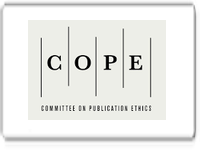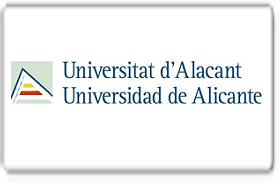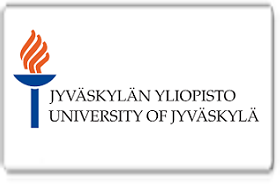Diagnóstico y tratamiento del Síndrome de Hakim Adams.
DOI:
https://doi.org/10.56048/MQR20225.7.3.2023.2768-2792Palabras clave:
Síndrome de Hakim Adams, Hidrocefalia de presión normal, Hidrocéfalo normotensoResumen
Introducción: La hidrocefalia de presión normal (HPN) es una condición neurológica caracterizada por la dilatación de los ventrículos cerebrales en ausencia de un aumento significativo de la presión intracraneal. Esta enfermedad se presenta con síntomas progresivos, incluyendo trastornos de la marcha, deterioro cognitivo y alteraciones del control de la vejiga. Objetivo: Detallar los principales métodos de diagnóstico y tratamiento del Síndrome de Hakim Adams.
Metodología: Se realizó una búsqueda exhaustiva de la literatura científica en bases de datos especializadas como PubMed, Scopus y Web of Science. Se aplicaron criterios de inclusión para seleccionar estudios clínicos y revisión de literatura publicados en los últimos cinco años. Resultados: Los síntomas más frecuentes de la hidrocefalia de presión normal incluyeron trastornos de la marcha, deterioro cognitivo, incontinencia urinaria y alteraciones del estado mental. Las técnicas de imagen como la resonancia magnética y la tomografía por emisión de positrones demostraron ser útiles para el diagnóstico temprano y preciso de la hidrocefalia de presión normal. La cirugía de derivación ventrículoperitoneal se destacó como una opción terapéutica efectiva para mejorar la función y calidad de vida en los pacientes afectados. Conclusiones: La hidrocefalia de presión normal representa un desafío diagnóstico debido a sus síntomas inespecíficos. El uso de técnicas de imagen avanzadas y escalas de evaluación clínica es crucial para un diagnóstico preciso. La cirugía de derivación ventrículoperitoneal se presenta como una opción terapéutica prometedora.
Descargas
Métricas
Cited
DOI: 10.56048![]()
Citas
V Gavrilov G, V Gaydar B, V Svistov D, E Korovin A, N Samarcev I, P Churilov L, et al. Idiopathic Normal Pressure Hydrocephalus (Hakim-Adams syndrome): clinical symptoms, diagnosis and treatment. Psychiatr Danub. 2019;31(suppl 5):737-44.
Reeves BC, Karimy JK, Kundishora AJ, Mestre H, Cerci HM, Matouk C, et al. Glymphatic system impairment in Alzheimer’s disease and idiopathic normal pressure hydrocephalus. Trends Mol Med. 2020;26(3):285-95.
Skalický P, Mládek A, Vlasák A, De Lacy P, Beneš V, Bradáč O. Normal pressure hydrocephalus—an overview of pathophysiological mechanisms and diagnostic procedures. Neurosurg Rev. 2020;43(6):1451-64.
Xie X, Ren K, Zhou Z, Dang C, Zhang H. The global, regional and national burden of peptic ulcer disease from 1990 to 2019: a population-based study. BMC Gastroenterol. 2022;22(1):58.
Oliveira LM, Nitrini R, Román GC. Normal-pressure hydrocephalus: A critical review. Dement Neuropsychol. 2019;13:133-43.
Hakim F, Ramón JF, Gómez DF, Ghotme KA, Mejía JA, Jimenez E, et al. Proposal for a normal pressure hydrocephalus syndrome center of excellence. Interdiscip Neurosurg. 2022;28:101506.
Passos-Neto CEB, Lopes CCB, Teixeira MS, Studart Neto A, Spera RR. Normal pressure hydrocephalus: an update. Arq Neuropsiquiatr. 2022;80:42-52.
Jeppsson A, Wikkelsö C, Blennow K, Zetterberg H, Constantinescu R, Remes AM, et al. CSF biomarkers distinguish idiopathic normal pressure hydrocephalus from its mimics. J Neurol Neurosurg Psychiatry. 2019;90(10):1117-23.
Micchia K, Formica C, De Salvo S, Muscarà N, Bramanti P, Caminiti F, et al. Normal pressure hydrocephalus: Neurophysiological and neuropsychological aspects: a narrative review. Medicine (Baltimore). 2022;101(9).
Garegnani L, Franco JVA, Ciapponi A, Garrote V, Vietto V, Medina SAP. Ventriculo‐peritoneal shunting devices for hydrocephalus. Cochrane Database Syst Rev. 2020;(6).
Isaacs AM, Williams MA, Hamilton MG. Current update on treatment strategies for idiopathic normal pressure hydrocephalus. Curr Treat Options Neurol. 2019;21:1-24.
Cuenca UC de. Lineas de investigacion institucionales. 2020. p. 90-8.
Lalou AD, Czosnyka M, Donnelly J, Pickard JD, Nabbanja E, Keong NC, et al. Cerebral autoregulation, cerebrospinal fluid outflow resistance, and outcome following cerebrospinal fluid diversion in normal pressure hydrocephalus. J Neurosurg. 2018;130(1):154-62.
Pedersen SH, Lilja-Cyron A, Andresen M, Juhler M. The relationship between intracranial pressure and age—chasing age-related reference values. World Neurosurg. 2018;110:e119-23.
Kerscher SR, Schöni D, Hurth H, Neunhoeffer F, Haas-Lude K, Wolff M, et al. The relation of optic nerve sheath diameter (ONSD) and intracranial pressure (ICP) in pediatric neurosurgery practice-Part I: Correlations, age-dependency and cut-off values. Child’s Nerv Syst. 2020;36:99-106.
Wang Z, Zhang Y, Hu F, Ding J, Wang X. Pathogenesis and pathophysiology of idiopathic normal pressure hydrocephalus. CNS Neurosci Ther. 2020;26(12):1230-40.
Grasso G, Torregrossa F. The impact of cerebrospinal fluid shunting on quality of life in idiopathic normal pressure hydrocephalus: a long-term analysis. Neurosurg Focus. 2023;54(4):E7.
Capone PM, Bertelson JA, Ajtai B. Neuroimaging of normal pressure hydrocephalus and hydrocephalus. Neurol Clin. 2020;38(1):171-83.
Kockum K, Virhammar J, Riklund K, Söderström L, Larsson E-M, Laurell K. Diagnostic accuracy of the iNPH Radscale in idiopathic normal pressure hydrocephalus. PLoS One. 2020;15(4).
Omar T, Bastidas Z, Felipe M, Acosta C, Andrea N, Cortes C, et al. Hidrocefalia de presión normal o síndrome de Hakim y Adams : reporte de dos casos Normal pressure hydrocephalus or Hakim-Adams syndrome : report of two cases. Rev la Fac Ciencias la Salud la Univ del Cauca. 2019;21(1):43-9.
Bandrivska S, Bandrivskyi M, Pepenina I, Maslianchuk N, Mykhailovska N, Lasiichuk I, et al. Clinical and Radiological Features of Possible Normal Pressure Hydrocephalus in a Patient with Multiple Sclerosis. Am J Psychiatry Neurosci. 2023;11(2):34-40.
Devos T, Meers S, Boeckx N, Gothot A, Deeren D, Chatelain B, et al. Diagnosis and management of PNH: review and recommendations from a Belgian expert panel. Eur J Haematol. 2018;101(6):737-49.
Murphy MC, Cogswell PM, Trzasko JD, Manduca A, Senjem ML, Meyer FB, et al. Identification of normal pressure hydrocephalus by disease-specific patterns of brain stiffness and damping ratio. Invest Radiol. 2020;55(4):200.
Lau S-YJ, Agius H. A framework and immersive serious game for mild cognitive impairment. Multimed Tools Appl. 2021;80(20):31183-237.
Das JM, Biagioni MC. Normal pressure hydrocephalus. En: StatPearls [Internet]. StatPearls Publishing; 2021.
Duyan M, Cackin H, Vural N, Saridas A. Use of Ventriculoperitoneal Shunt Reservoir as an Alternative to Lumbar Puncture, Case Series. Black Sea J Heal Sci. 2023;6(1):172-4.
Zamora T, Cáceres M, Cerón N, Zúñiga L, Prado A. Hidrocefalia de presión normal o síndrome de Hakim y Adams: reporte de dos casos. Rev la Fac Ciencias la Salud Univ del Cauca. 2019;21(1):43-9.
Wu E, El Ahmadieh T, Kafka B, Caruso J, Aoun S, Plitt A, et al. Ventriculoperitoneal shunt outcomes of normal pressure hydrocephalus: a case series of 116 patients. Cureus. 2019;11(3).
Rau A, Kim S, Yang S, Reisert M, Kellner E, Duman IE, et al. SVM-based normal pressure hydrocephalus detection. Clin Neuroradiol. 2021;1-7.
Bluett B, Ash E, Farheen A, Fasano A, Krauss J, Maranzano A, et al. Clinical features of idiopathic normal pressure hydrocephalus: Critical review of objective findings. Mov Disord Clin Pract. 2023;10(1):9-16.
Williams M, Nagel S, Golomb J, Jensen H, Dasher N, Holubkov R, et al. Safety and effectiveness of the assessment and treatment of idiopathic normal pressure hydrocephalus in the Adult Hydrocephalus Clinical Research Network. J Neurosurg. 2022;137(5):1289-301.
Lukkarinen H, Jeppsson A, Wikkelsö C, Blennow K, Zetterberg H, Constantinescu R, et al. Cerebrospinal fluid biomarkers that reflect clinical symptoms in idiopathic normal pressure hydrocephalus patients. Fluids Barriers CNS. 2022;19(1):1-13.
Neikter J, Agerskov S, Hellström P, Tullberg M, Starck G, Ziegelitz D, et al. Ventricular volume is more strongly associated with clinical improvement than the evans index after shunting in idiopathic normal pressure hydrocephalus. Am J Neuroradiol. 2020;41(7):1187-92.
Saldarriaga-Cantillo A, Yepes-Gaviria V, Rivas JC. Normal pressure hydrocephalus: Diagnostic delay. Biomédica. 2020;40(4):656.
Bae Y, Choi B, Kim J, Choi J, Cho S, Kim J. Altered glymphatic system in idiopathic normal pressure hydrocephalus. Parkinsonism Relat Disord. 2021;82:56-60.
Kang K, Young S, Park K, Hun M, Kim J, Lee H, et al. Distinct cerebral cortical perfusion patterns in idiopathic normal‐pressure hydrocephalus. Hum Brain Mapp. 2023;44(1):269-79.
Graff-Radford J, Gunter JL, Jones DT, Przybelski SA, Schwarz CG, Huston J, et al. Cerebrospinal fluid dynamics disorders: relationship to Alzheimer biomarkers and cognition. Neurology. 2019;93(24):e2237-46.
Giannakopoulos P, Montandon M, Herrmann F, Hedderich D, Gaser C, Kellner E, et al. Alzheimer resemblance atrophy index, BrainAGE, and normal pressure hydrocephalus score in the prediction of subtle cognitive decline: added value compared to existing MR imaging markers. Eur Radiol. 2022;32(11):7833-42.
Thavarajasingam S, El-Khatib M, Rea M, Russo S, Lemcke J, Al-Nusair L, et al. Clinical predictors of shunt response in the diagnosis and treatment of idiopathic normal pressure hydrocephalus: a systematic review and meta-analysis. Acta Neurochir (Wien). 2021;163:2641-72.
Ferrari A, Milletti D, Palumbo P, Giannini G, Cevoli S, Magelli E, et al. Gait apraxia evaluation in normal pressure hydrocephalus using inertial sensors. Clinical correlates, ventriculoperitoneal shunt outcomes, and tap-test predictive capacity. Fluids Barriers CNS. 2022;19(1):51.
Hasselbalch S, Carlsen J, Alaouie M, Munch T. Prediction of shunt response in idiopathic normal pressure hydrocephalus by combined lumbar infusion test and preoperative imaging scoring. Eur J Neurol. 2023;
Sotoudeh H, Sadaatpour Z, Rezaei A, Shafaat O, Sotoudeh E, Tabatabaie M, et al. The role of machine learning and radiomics for treatment response prediction in idiopathic normal pressure hydrocephalus. Cureus. 2021;13(10).
Hallqvist C, Grönstedt H, Arvidsson L. Gait, falls, cognitive function, and health-related quality of life after shunt-treated idiopathic normal pressure hydrocephalus—a single-center study. Acta Neurochir (Wien). 2022;164(9):2367-73.
McGovern R, Nelp T, Kelly K, Chan A, Mazzoni P, Sheth S, et al. Predicting cognitive improvement in normal pressure hydrocephalus patients using preoperative neuropsychological testing and cerebrospinal fluid biomarkers. Neurosurgery. 2019;85(4):E662-9.
Kimura T, Yamada S, Sugimura T, Seki T, Miyano M, Fukuda S, et al. Preoperative predictive factors of short-term outcome in idiopathic normal pressure hydrocephalus. World Neurosurg. 2021;151:e399-406.
Giannini G, Palandri G, Ferrari A, Oppi F, Milletti D, Albini-Riccioli L, et al. A prospective evaluation of clinical and instrumental features before and after ventriculo-peritoneal shunt in patients with idiopathic Normal pressure hydrocephalus: The Bologna PRO-Hydro study. Parkinsonism Relat Disord. 2019;66:117-24.
Ricciardi M, Calandri I, Alessandro L, Farez M, Villalonga J, Fausti M, et al. Predictors of favorable response to implanted of ventriculoperitoneal shunt in patients with idiopathic normal pressure hydrocephalus: Predictores de respuesta favorable al implante de derivación ventriculoperitoneal en pacientes con hidrocefalia idiopáti. J Appl Cogn Neurosci. 2020;1(1):81-6.
Oliveira, L. M., Nitrini, R., & Román, G. C. (2019). Normal-pressure hydrocephalus: A critical review. Dementia & Neuropsychologia, 13(2), 133-143. https://doi.org/10.1590/1980-57642018dn13-020001
Gaspar V. Gavrilov, Boris V. Gaydar, Dmitry V. Svistov, Alexander E. Korovin, Igor N. Samarcev, Leonid P. Churilov & Dmitry V. Tovpeko: IDIOPATHIC NORMAL PRESSURE HYDROCEPHALUS (HAKIM-ADAMS SYNDROME): CLINICAL SYMPTOMS, DIAGNOSIS AND TREATMENT Medicina Academica Mostariensia, 2019; Vol. 7, No. 1-2, pp 15-22
Publicado
Cómo citar
Número
Sección
Licencia
Derechos de autor 2023 MQRInvestigar

Esta obra está bajo una licencia internacional Creative Commons Atribución 4.0.
Los autores se comprometen a respetar la información académica de otros autores, y a ceder los derechos de autor a la Revista MQRInvestigar, para que el artículo pueda ser editado, publicado y distribuido. El contenido de los artículos científicos y de las publicaciones que aparecen en la revista es responsabilidad exclusiva de sus autores. La distribución de los artículos publicados se realiza bajo una licencia 
































































































